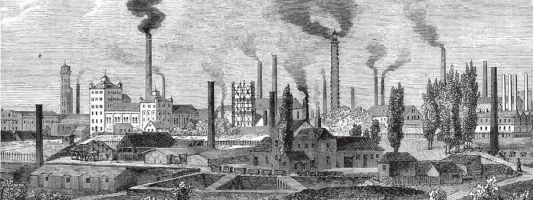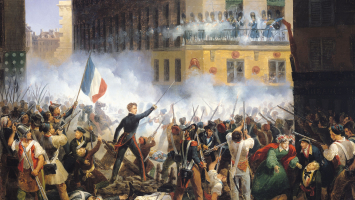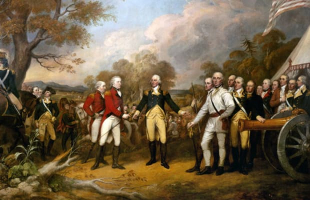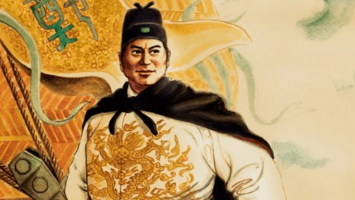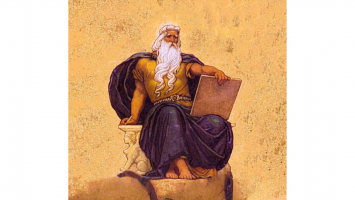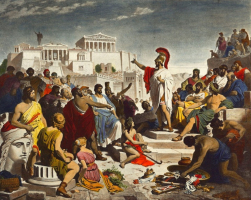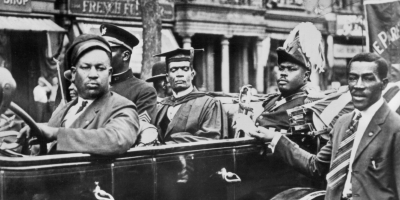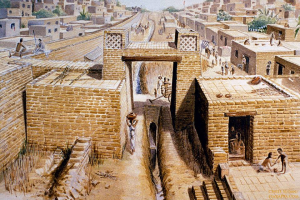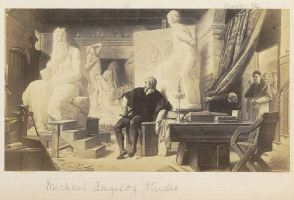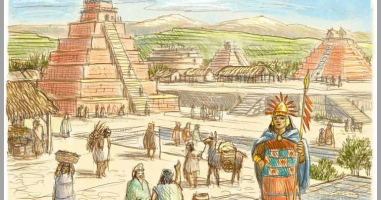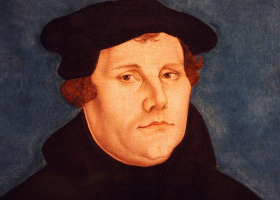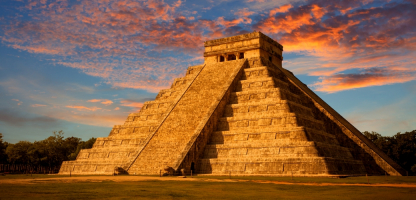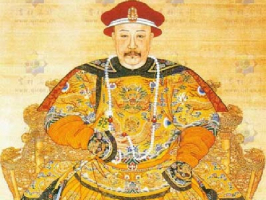Top 10 Interesting Facts About The American Revolution
Between 1765 to 1791, the American Revolution was an ideological and political revolution in British America. In the American Revolutionary War (1775–1783), ... read more...the Americans in the Thirteen Colonies formed independent states that defeated the British, gaining independence from the British Crown and establishing the constitution that gave birth to the United States of America, the first modern constitutional liberal democracy. Let's explore more about this important event through 10 interesting facts about the American Revolution with Toplits!
-
The British had spent large sums of money fighting the Seven Years' War and the French and Indian War in the years leading up to the Revolution. Furthermore, they possessed a 10,000-man standing army in North America. The British Parliament determined that the Americans should share some of the burden, and as a result, a series of tax acts were created. The British Parliament continued to impose additional laws and taxes on the American colonies. The taxes were not high, and after the Constitution was adopted, the Americans taxed themselves at much higher rates than the British.The Sugar Act, for example, was enacted by the British government in 1764, increasing the tax on sugar and other imported items such as textiles, coffee, wine, and dyes. The Stamp Act of 1765 was the first direct tax on the American colonies, levying a duty on all printed publications such as newspapers, pamphlets, bills, legal documents, licenses, almanacs, dice, and playing cards. The American colonists met these two actions with the most vehement opposition.
Furthermore, after American protests, the majority of these levies were removed. The issue of contention was that the colonies were taxed by a British parliament that they did not elect members to. One of the fundamental reasons for the American Revolution was the issue of "no taxation without representation." Furthermore, the colonists knew that if they did not resist the aggressive British tax policy, the level of taxation would rise dramatically in the future. This has been identified as the Revolution's fundamental economic motivator. Despite colonists' lobbying, petitions, boycotts, and violence, the British Parliament was adamant in its right to tax the colonies, which inevitably led to war.
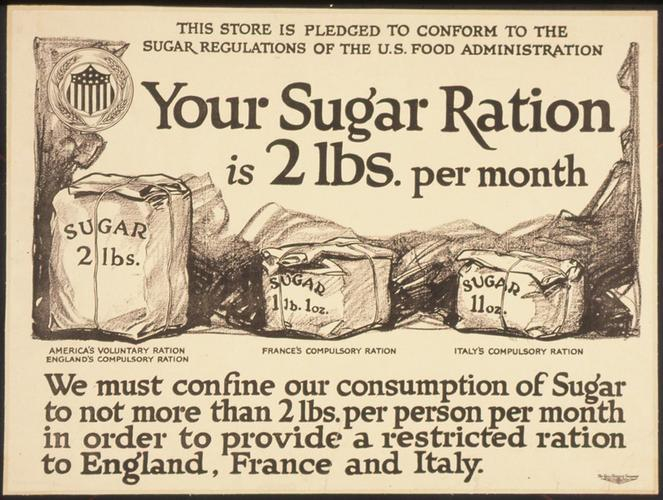
Photo: Suotri 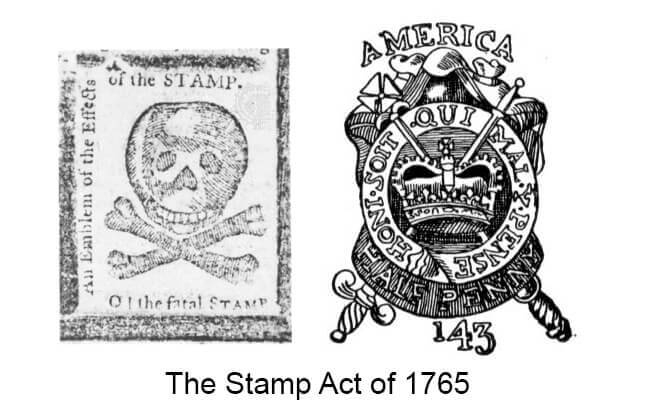
Photo: Surfnetkids -
The second interesting fact about the American Revolution is that Samuel Adams was a significant person in the early period of the event. Samuel Adams was born in Boston and was elected to the Massachusetts legislature in 1764. The next year, the British Parliament approved the Stamp Act, which for the first time imposed direct taxes on the colonies. Samuel Adams was one of the first to protest taxation without representation, and he opposed the Act. Furthermore, through his writings, he exhorted fellow Bostonians to oppose what he saw as the British Parliament's illegitimate acts. The Tea Act, passed by Parliament on May 10, 1773, authorized the East India Company to trade tea in American colonies without paying taxes. By that time, Adams had gained command of the Massachusetts radicals, and it was he, more than anyone else, who orchestrated the 1773 Boston Tea Party.
Bostonians dropped 342 chests of tea worth £10,000 into Boston Harbor, which was a major action leading up to the Revolutionary War. In the early stages of the American Revolution, Samuel Adams was a key figure. He was an expert at organizing protests and disseminating the revolution's cause through his writings. Adams served as Governor of Massachusetts from 1794 to 1797 when the United States gained independence. When he died on October 2, 1803, the Independent Chronicle, a Republican newspaper in Boston, hailed him as the "Father of the American Revolution."
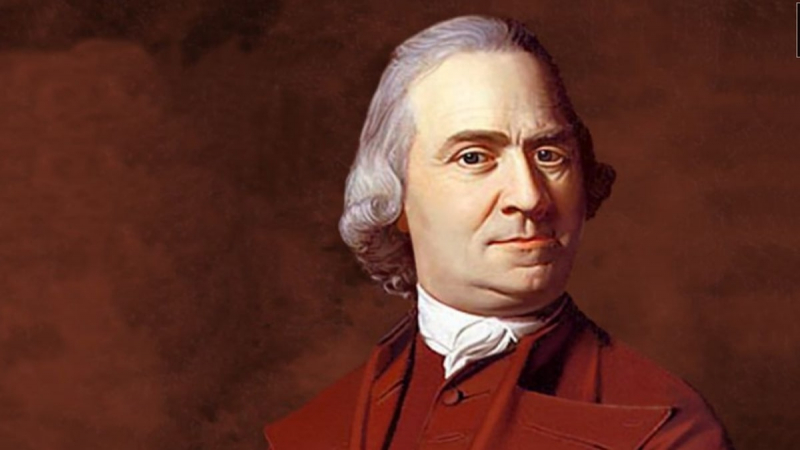
Photo: Foundation of Economic Education 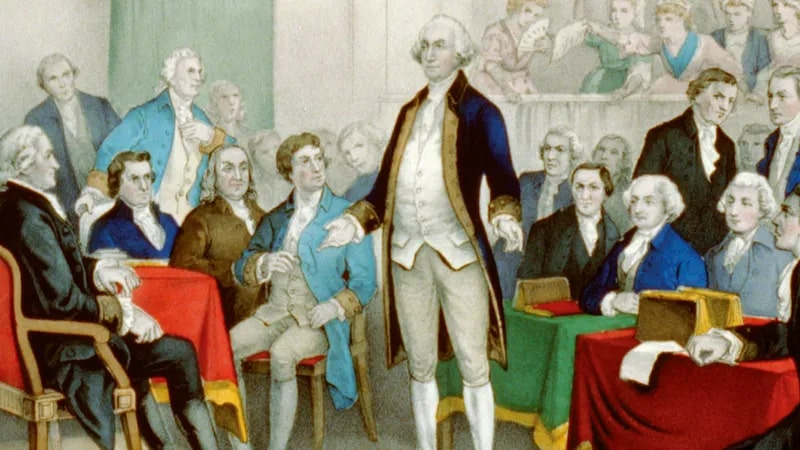
Photo: Encyclopedia Britanica -
Prior to the fight, the British assumed that in the case of a war, the Americans would offer less of a threat. This was attributable to a number of factors. There was no standing army or navy in the colonies. In comparison, Britain had one of the best professional armies in the world, as well as the world's top fleet. The colonists had little expertise in warfare, and only a handful of them were officers. Furthermore, the colonies had little prior experience working together. In battle, the British had a low opinion of Americans. British Brig. Gen. James Wolfe, for example, referred to American soldiers as "cowardly hounds." As a result, the British felt confident in their military dominance, believing that a few humiliating defeats at their hands would be enough to put down the uprising.
On April 19, 1775, the Battles of Lexington and Concord, the Revolutionary War's first military engagements, took place. On June 17, two months later, another fight at Bunker Hill was fought. These two fights demonstrated to the British that their assumption that American citizen-soldiers could not stand up to British regulars was incorrect. In these battles, the British lost approximately 1,500 soldiers, more than three times the American toll. The fights were particularly crucial because their psychological benefits resulted in a tremendous boost in colonial morale, allowing the Continental Army to be formed quickly to fight the war.
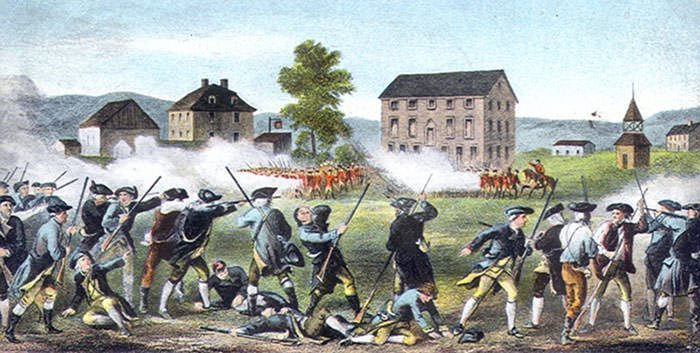
Photo: Learnodo Newtonic 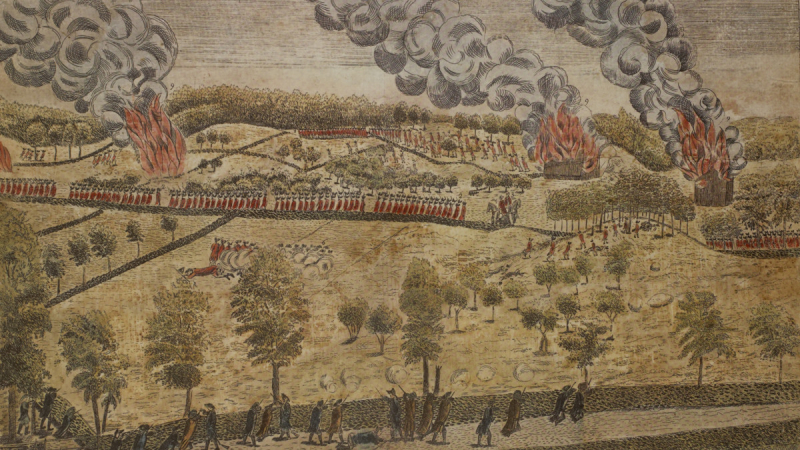
Photo: history.com -
Britain almost won at Brooklyn Heights would be the next interesting fact about the American Revolution. George Washington, Commander-in-Chief of the Continental Army, led his men to protect the strategically crucial port city of New York after defeating the British in the Siege of Boston in March 1776. The British, led by General William Howe, arrived on Staten Island, a few miles across the water from Manhattan, in July. Howe's massive army landed on Long Island on August 22, expecting to conquer New York City and gain control of the Hudson River, dividing the rebellious colonies in half. On August 27, they launched an attack on American defenses. Furthermore, the Americans were unaware that Howe had maneuvered his main army around their rear and attacked their flank. This prompted panic among the Americans, resulting in around 20% casualties and captures. The remaining army was forced to retreat behind Brooklyn Heights' main defenses.
The Americans were considered to be trapped, therefore Howe planned for a siege, with his forces blocking escape by land and the Royal Navy limiting escape by sea. Washington may have lost his entire army if he had been outmanned and surrounded, and the British could have won decisively. Washington himself stated that his army was forced to choose between battling its way out "under every difficulty" or starvation. Howe, on the other hand, was reluctant to respond, and Washington took advantage of a storm to evacuate his entire army to Manhattan with no loss of supplies or lives.
The Americans lost 1,000 troops in the Battle of Brooklyn, while the British lost only 400. The British took control of New York City on September 15th.
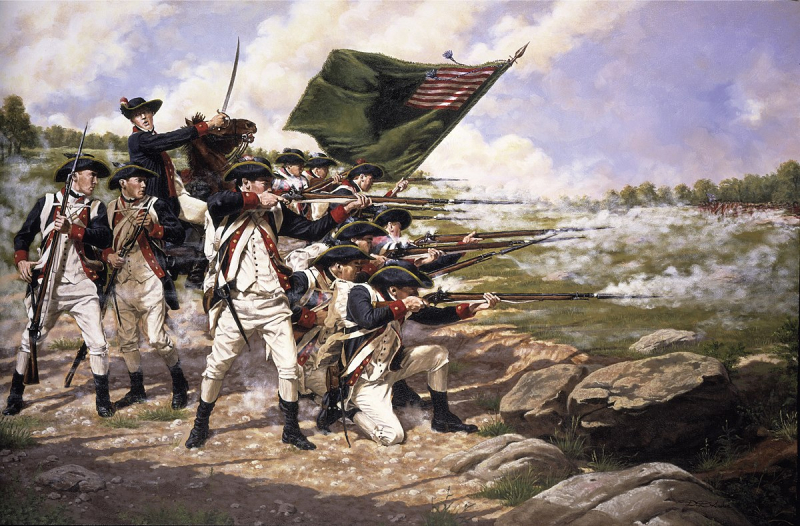
Photo: Wikipedia 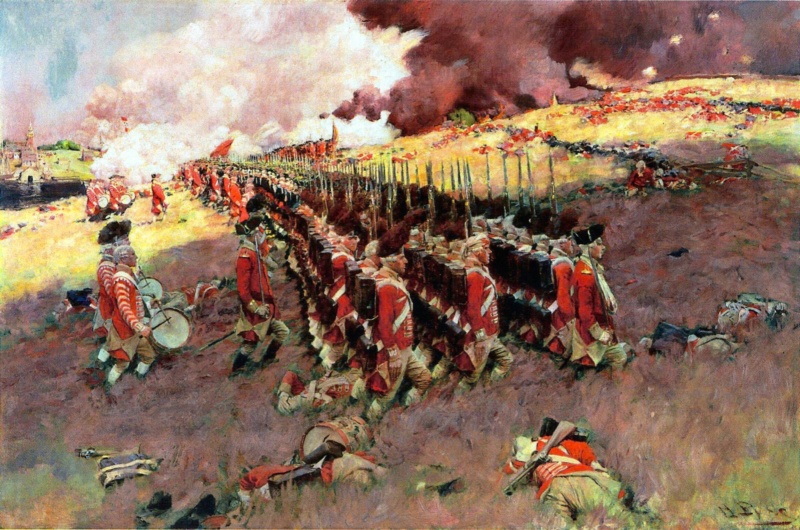
Photo: Journal of the American Revolution -
The pivotal moment in the Revolutionary War began with a British strategy to strategically control Upstate New York and isolate New England from the Southern colonies in order to put the Revolution to a definitive end. It turned out to be a once-in-a-lifetime opportunity for the Patriots. The Americans had suffered a series of setbacks before the Battle of Trenton, forcing them to retreat through New Jersey and into Pennsylvania. The Continental Army's morale was at an all-time low, and many troops had deserted. George Washington devised a daring strategy to attack the enemy soldiers stationed in Trenton, New Jersey, at this critical juncture. The legendary crossing of the Delaware River, which was completed "with almost great difficulty," was made first by the American forces. On December 26, 1776, they beat the German missionaries at Trenton in within an hour, seizing around 900 soldiers, as well as food, arms, and ammunition. The victory at Trenton was critical because it increased the Continental Army's morale, emboldened rebels in the provinces, and resulted in new recruits joining the army.
The Battles of Saratoga, which took place on September 19 and October 7, 1777, were the second turning point in the Revolutionary War. After being encircled, British General John Burgoyne surrendered his whole army of 5,895 men on October 17. The sweeping victory gave France faith in America's ability to win the war, resulting in the formation of the formal Franco-American alliance in 1778. Because France would go on to play a vital part in America's victory, the victory at Saratoga is seen as a watershed moment in the war.
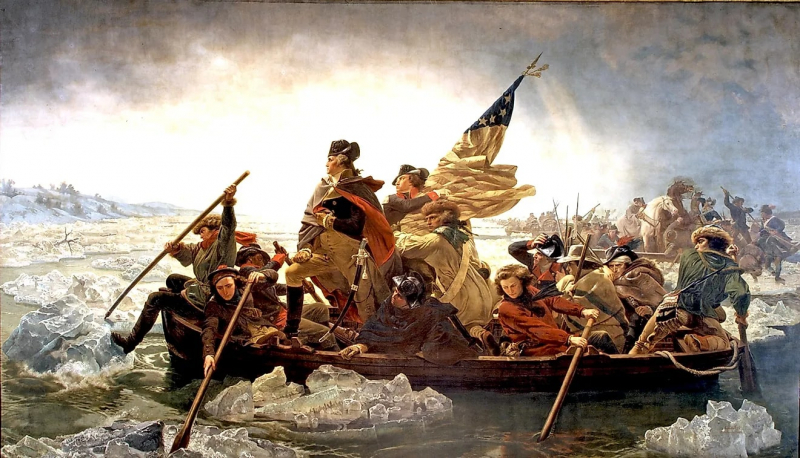
Photo: World Atlas 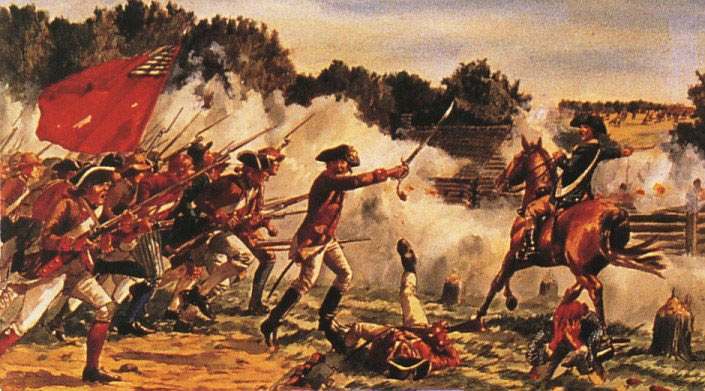
Photo: History on the Net -
William Armistead of Virginia owned an African American slave named James Armistead. James received permission from his master to join the Continental Army and served under French commander Marquis de Lafayette. He began his career as a spy for Lafayette by delivering intelligence reports across enemy lines. In 1781, Armistead posed as an escaped slave who was loyal to the British in the camp of traitor Benedict Arnold. Arnold immediately acquired his trust, and he utilized him to direct British forces through the local roads. After that, James proceeded to the camp of British General Charles Cornwallis, who hired him as a spy for the British. What an interesting fact about the American Revolution!
As a double spy, James began giving fake intelligence to the British, which he received from Lafayette, while giving the Americans very accurate and thorough details. James gave the most crucial intelligence report on Cornwallis's advance from Portsmouth to Yorktown, as well as the arrival of 10,000 British troops at Yorktown. This knowledge was crucial in the Continental Army's victory over the British in the critical Battle of Yorktown. Despite putting his life on the line for his country, James Armistead was returned to his owner at the end of the war. Lafayette, on the other hand, offered a testimonial in 1784 affirming his vital role as a spy. As a result, James Armistead became a free man in 1787, and he changed his name to James Armistead Lafayette as a token of appreciation to the Frenchman.
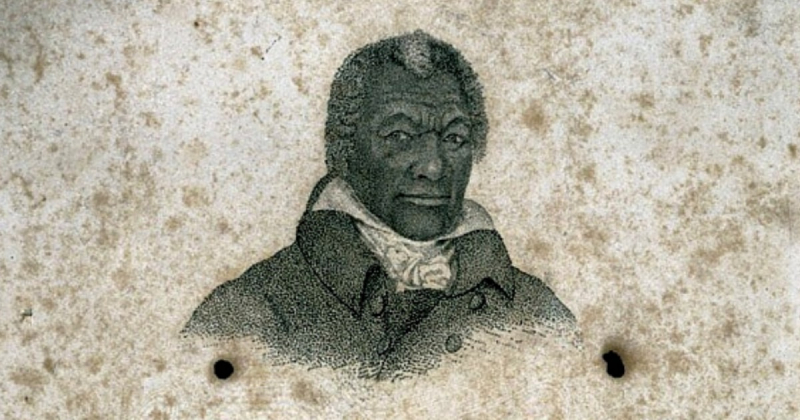
Photo: American Battlefield Trust 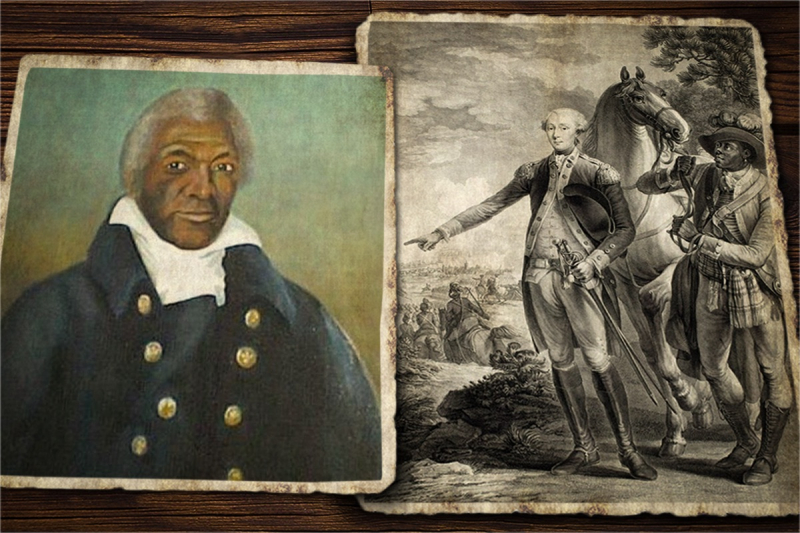
Photo: Coffee or Die Magazine -
The Peace of Paris accords, which were signed in 1783 and 1784, officially ended the American Revolutionary War. The Treaty of Paris, signed on September 3, 1783 by representatives of King George III of Great Britain and representatives of the United States of America, was the most important of these. The existence of the United States as free, sovereign, and independent states was acknowledged in article 1 of this treaty. During the American Revolution, several Native American tribes took part. The majority of them supported the British in the hopes that a British victory would halt further colonial expansion into their lands. However, there was no indigenous representation at the peace talks.
Despite the fact that this region was mainly unsettled by whites and mostly inhabited by Native Americans, the British awarded the United States all land between the Appalachian Mountains and the Mississippi River. The United States quickly moved westward after winning freedom, often violently, taking Indian territory by treaty and force. Supporters of the Americans, such as the Stockbridges and Oneidas, as well as the Senecas and Shawnees who fought against them, lost their territory. It is possible to say that American independence signaled the beginning of the end of Native American independence.
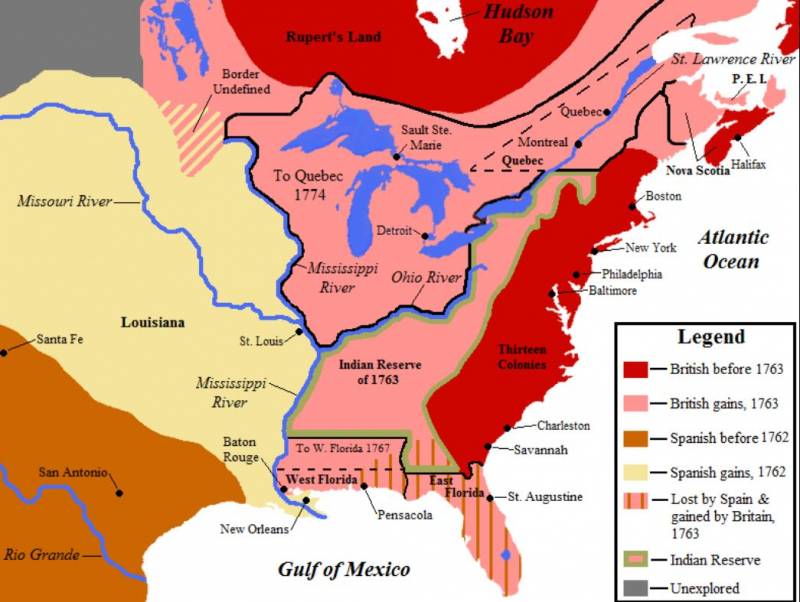
Photo: The History Guy 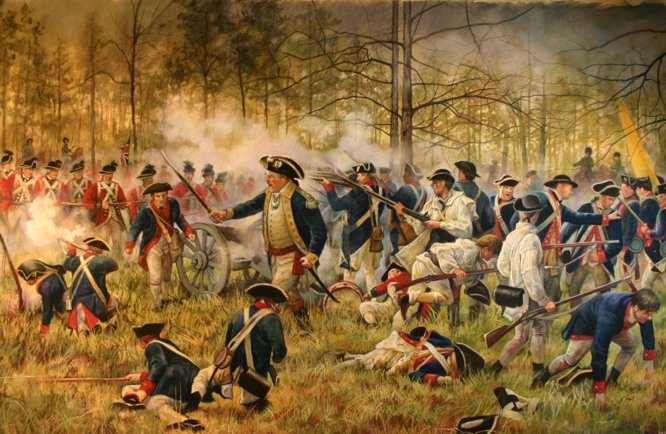
Photo: Howard Zinn -
The eighth interesting fact about the American Revolution is that there were 5000 African Americans joined the fight. There were around 450,000 enslaved African Americans in the 13 colonies when the Revolutionary War began in 1775. Congress initially opposed the deployment of black soldiers because they feared an armed slave revolt. However, due to a paucity of men, Congress allowed all blacks, free and slave, to enlist in 1777. Around 9,000 African Americans had fought in some form for the American cause by the end of the war, with around 5,000 on the battlefield and the rest in noncombatant roles. This represents about 4% of the overall population. Slavery was abolished in the Northern States after the war, although individual manumissions flourished in the South. However, the majority of African people remained enslaved.
Furthermore, prejudice against free blacks persisted in practically every facet of society, including work, education, and housing. During the conflict, tens of thousands of blacks left their owners and sought asylum with the British; nevertheless, only a few served as soldiers. The British used the fugitives extensively as teamsters, chefs, nurses, and workers. Approximately 20,000 blacks left with the British at the end of the war. They made their homes in Canada, the United Kingdom, the West Indies, and Europe. Some were sold into slavery again. In 1792, 1,200 black Loyalists from Nova Scotia embarked for Sierra Leone, a British colony on Africa's west coast founded particularly for former slaves.
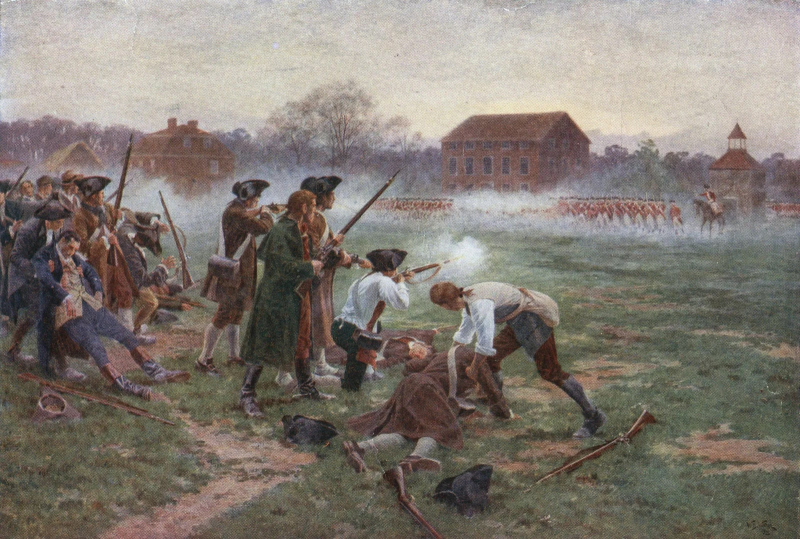
Photo: Encynclopedia Britanica 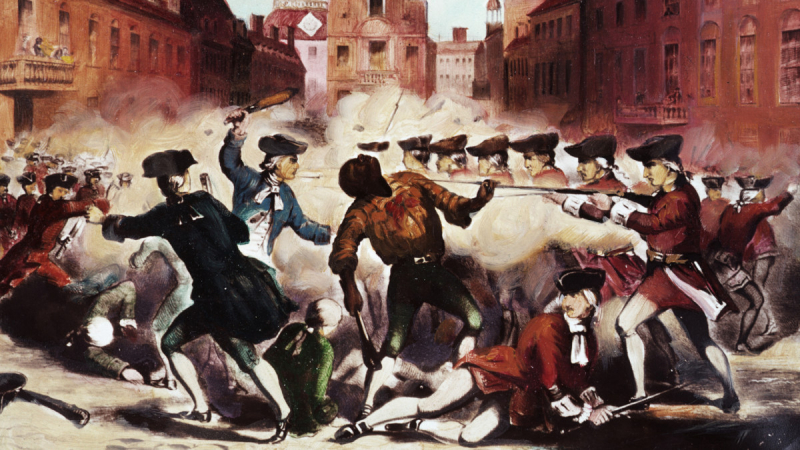
Photo: history.com -
Several women from the United States participated in the Revolutionary War. Margaret Corbin moved into her husband John's fighting station after he was slain at the Battle of Fort Washington and fought heroically, sustaining three gunshot wounds. She was the first woman to receive financial assistance from the government after the war. Anna Maria Lane accompanied her husband John to the battlefield dressed as a man. They fought in multiple campaigns together. Anna Maria was gravely wounded during the Battle of Germantown on October 3, 1777, and was paralyzed for the rest of her life. Lane, however, continued to serve in the army until 1781, despite her injury.
Deborah Sampson was the most well-known of the women who fought as men. Sampson was about 5 feet 9 inches tall and served in the army as "Robert Shirtliff." She was wounded twice during her one and a half years of service, but she continued to volunteer for dangerous duty. There is also a legend about a woman named Molly Pitcher who witnessed her husband being shot while giving water to parched soldiers. She then took over loading the cannon in his place. Mary Ludwig Hays is commonly credited with the deeds in the Molly Pitcher myth. Molly Pitcher became a catchall term for female combat water providers. Many historians feel that the name is a composite picture based on the acts of several historical women.
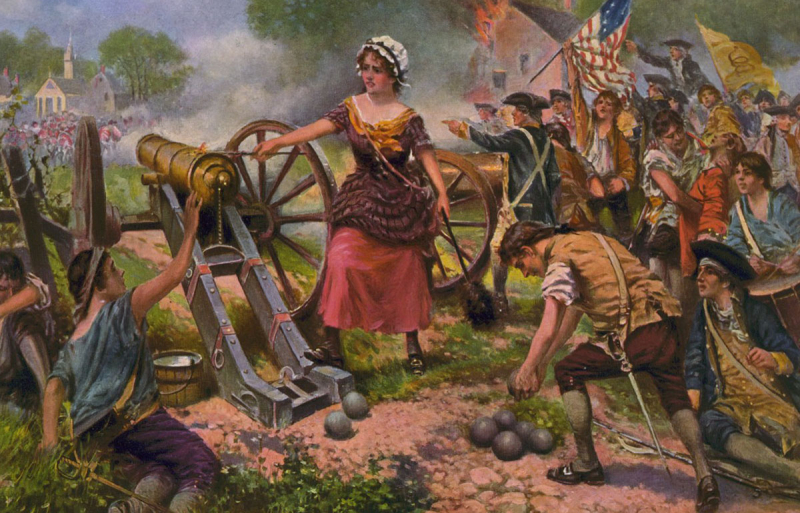
Photo; Vermont Humanities 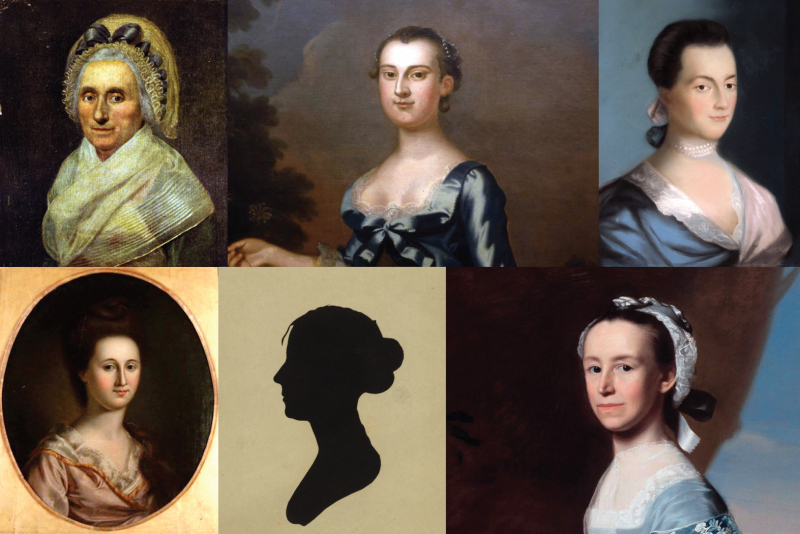
Photo: Journal of the American Revolution -
Three thousand American forces led by George Washington and four thousand French soldiers led by General Comte de Rochambeau marched from Newport, Rhode Island, to Yorktown, Virginia, on August 19, 1781. During the march, Washington sends out bogus letters to make Henry Clinton, the British Commander-in-Chief, believe his army was about to invade New York. This persuaded Clinton that Lord Cornwallis's position in Yorktown was secure. The siege of Yorktown began on September 28 when the city was totally besieged. On October 17, after being bombarded nonstop by Franco-American forces, with no chance of reinforcements and insufficient supplies, Cornwallis raised the white flag and surrendered his whole remaining force of almost 7,000 soldiers.
The Siege of Yorktown was the American Revolutionary War's final significant engagement. It compelled the British to negotiate a cease-fire. The British were refused conventional war honors, much as the Americans had been rejected after conquering Charleston. Furthermore, Lord Cornwallis declined to meet George Washington in person and skipped the surrender ceremony, claiming to be ill. Instead, he dispatched Brigadier General Charles O'Hara to deliver Rochambeau with the surrender sword. Rochambeau pointed to Washington, but when O'Hara presented it to him, he declined and urged his second-in-command, Benjamin Lincoln, to receive it instead. This interesting fact about the American Revolution also ends our list.
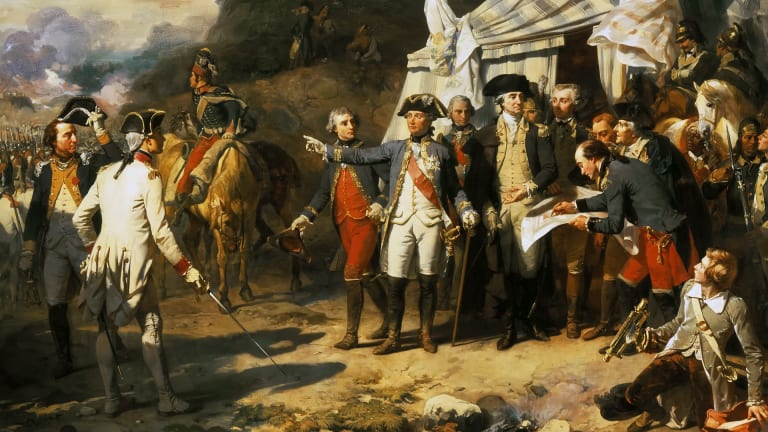
Photo: history.com 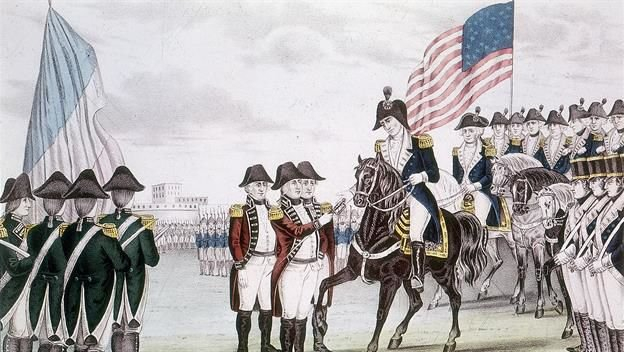
Photo: Herald Chronicle












